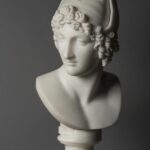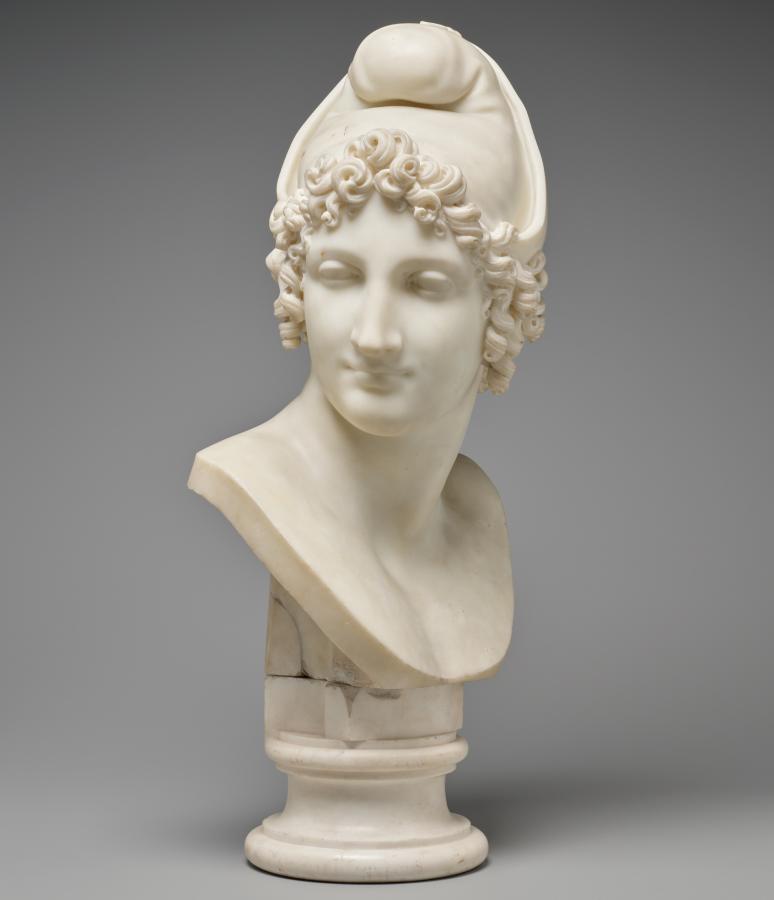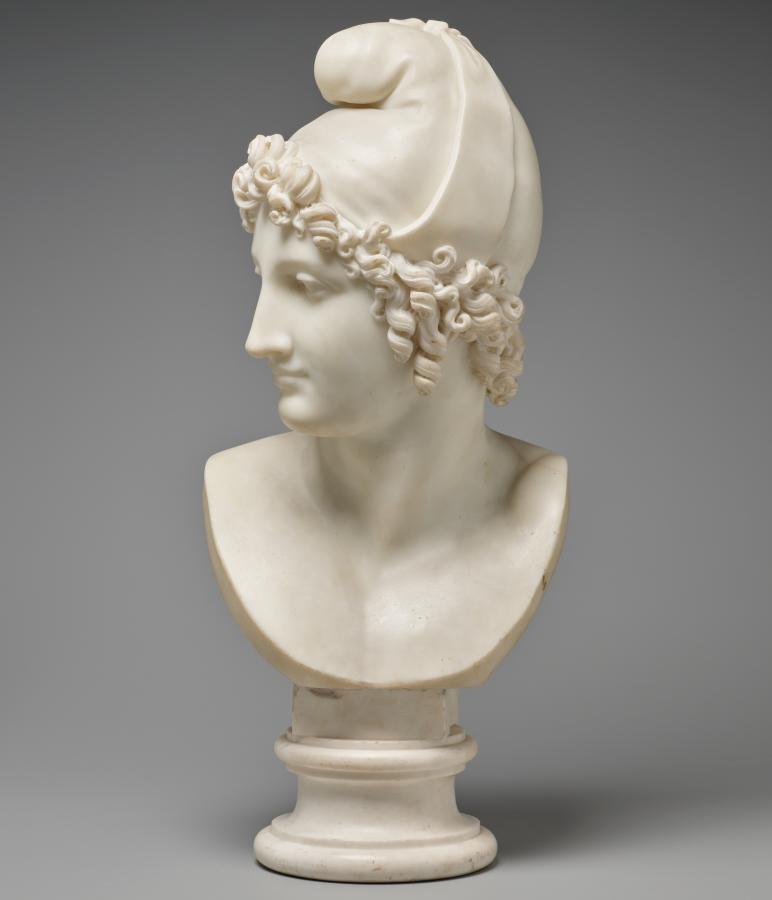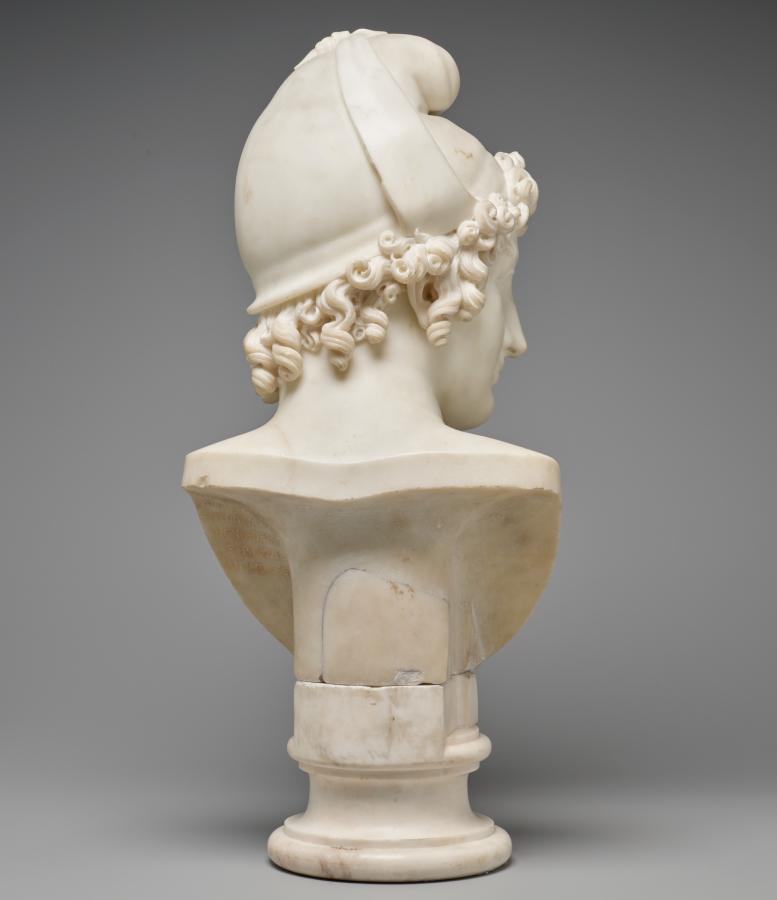Canova, Antonio (1757-1822)
Busto di Paride (Bust of Paris)
1809
Marble, 69.9 × 30.8 × 28 cm
Art Institute of Chicago, Chicago
Inscription: Ant(o)nio Quatremere/Amico Optimo/Antonius Canova/Dono Dedit/F. Romae/An. MDCCCIX”.
The enormously popular Neoclassical sculptor Antonio Canova frequently made replicas or variants of his major works to satisfy the demand for his art. While executing a commission from Empress Josephine of France for a full-length statue of Paris (State Hermitage Museum, Saint Petersburg), Canova carved this bust for his friend Antoine Quatremère de Quincy, a French Neoclassical theorist and critic who greatly influenced the sculptor’s artistic ideals. It depicts the moment in Greek mythology when the shepherd Paris, called upon by Zeus to judge who was the most beautiful among Hera, Athena, and Aphrodite, turns to gaze at the three goddesses. Canova exploited the subject to create an ideal head, balancing the geometry of pure forms with the sensuousness of Paris’s expression. Upon receipt of the gift, Quatremère stated: “There is in [the bust] a mixture of the heroic and the voluptuous, the noble and the amorous. I do not believe that in any other work you have ever combined such life, softness, and chaste purity.” Documents indicate that Canova made four full-length marble statues and at least seven busts of Paris, a clear indication of the sculpture’s popularity. (AIC)
Compare:
 Canova, Antonio (1757-1822)
Canova, Antonio (1757-1822)
Testa di Paride
c.1819
Hermitage Museum, Saint Petersburg


